Inside Brooklyn’s ‘Soviet Style’ Underground Boxing Gym
It’s a bit off the beaten path.
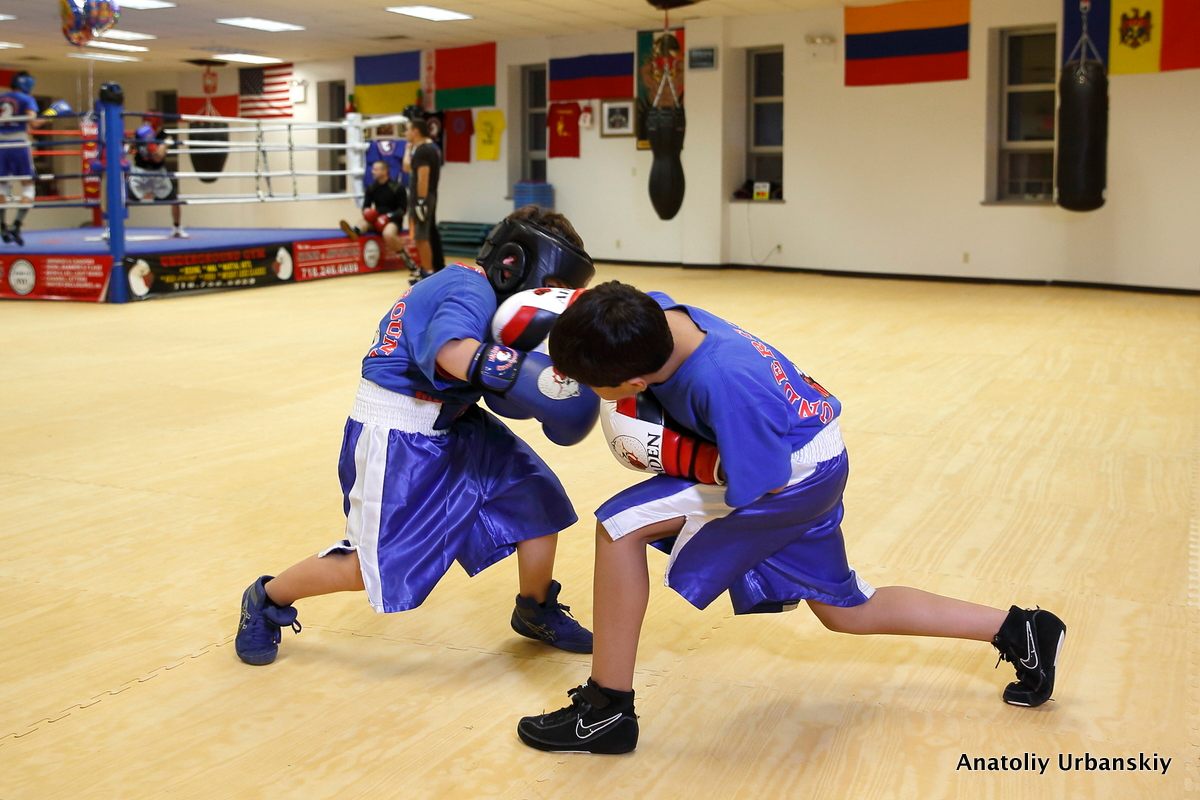
The Underground Boxing Gym in Sheepshead Bay, Brooklyn, has all the usual accoutrements of a traditional fighters’ gathering place: a ring, some heavy bags, dumbbells, mirrors, pull-up bars, and old fight posters. But to enter this place on a typical weekday evening is to discover a scene slightly out of step with the usual image of pugilistic education: gathered across the length of the gym is a troop of children—as young as five and as old as 15—diligently attending to their calisthenics. Later, they’ll don headgear and oversized gloves and proceed, in pairs, to duke it out in the ring.
Despite its name, the Underground Boxing Gym occupies the entire third floor of a commercial building just off of the B/Q subway station in Sheepshead Bay. In a canny bit of advertising, the gym’s logo — a billboard-sized poster of a hulking bear with boxing gloves lifted to its muzzle — can be seen overlooking the elevated subway platform.
Sheepshead Bay, along with neighboring Brighton Beach, is home to one of the largest Russian-speaking communities in the United States, an enclave growing denser each year. The bear, a centuries-old Russian symbol, is a fitting masthead for a locale where a cup of borscht is found without Yelp.
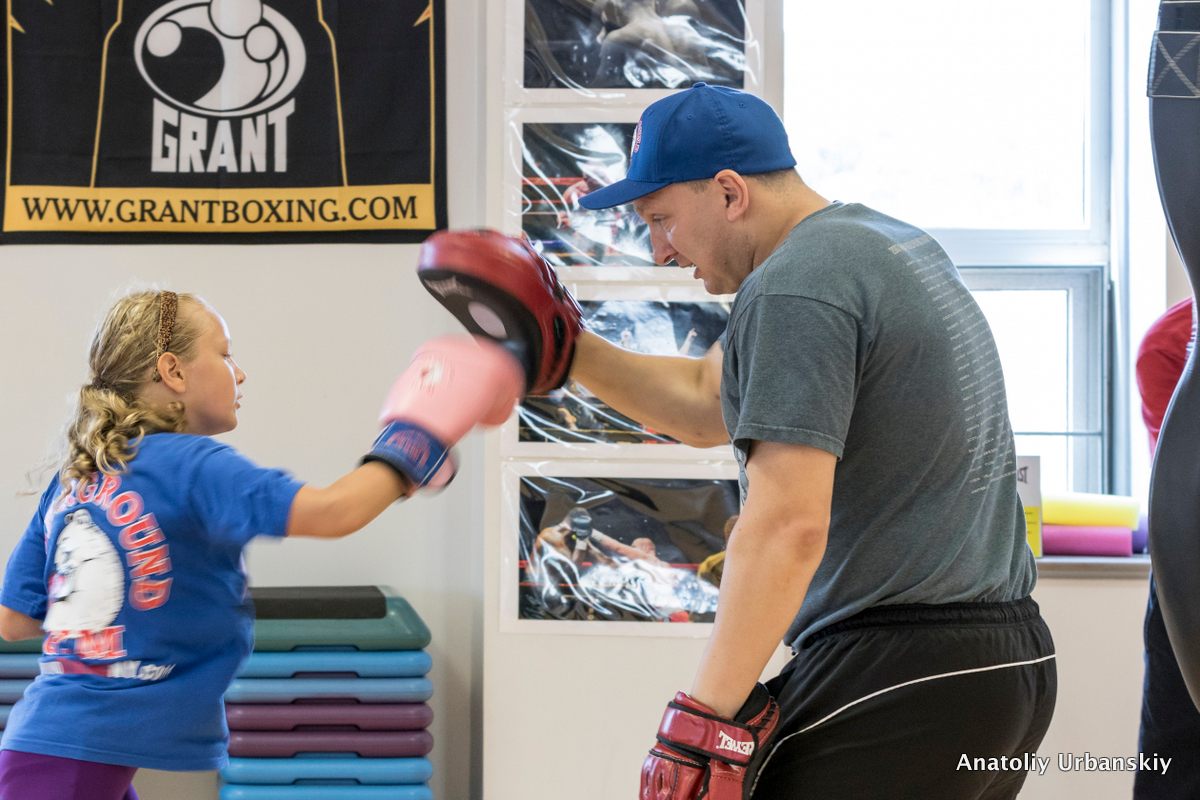
From the doorway of the gym, two tykes can be seen crawling through the ropes of the ring, their slightly bemused parents watching from the benches. Victoria Irlinksy, the mother of Alan, a six-year-old newcomer to the gym, sees boxing as an occasion for her son to grapple with real-world responsibility. “[Boxing] teaches them the basic principles of self-defense and discipline,” said Irlinksy. “They’re boys. They need to get their energy out somewhere and this is the best place for them.”
For Igor Rabinsky, whose son Lenny, 10, has had more than a few run-ins with bullies at school, the gym has instilled his son with the kind of confidence that makes him less likely to be picked on. “Lenny’s character has totally changed,” he says. “He is sure of himself. The [bullies] see that and think twice now.”
Boxing as a social crusading tool has been well-documented. It took a troubled Mike Tyson (who, admittedly, would stay troubled throughout his career) out of the streets of Brownsville and made him the heavyweight champion of the world. But as the gym’s founder and sole trainer Ilia Mesishchev makes clear, his ambitions for his fighters are measured on a much more moderate—but no less important—scale—human decency.
“People have to be polite to each other,” Mesishchev says. “The kids learn it here. Boxing isn’t about aggressive attitudes. It’s about human beings recognizing other human beings. If you don’t respect the other guy in the ring, you don’t respect yourself.”
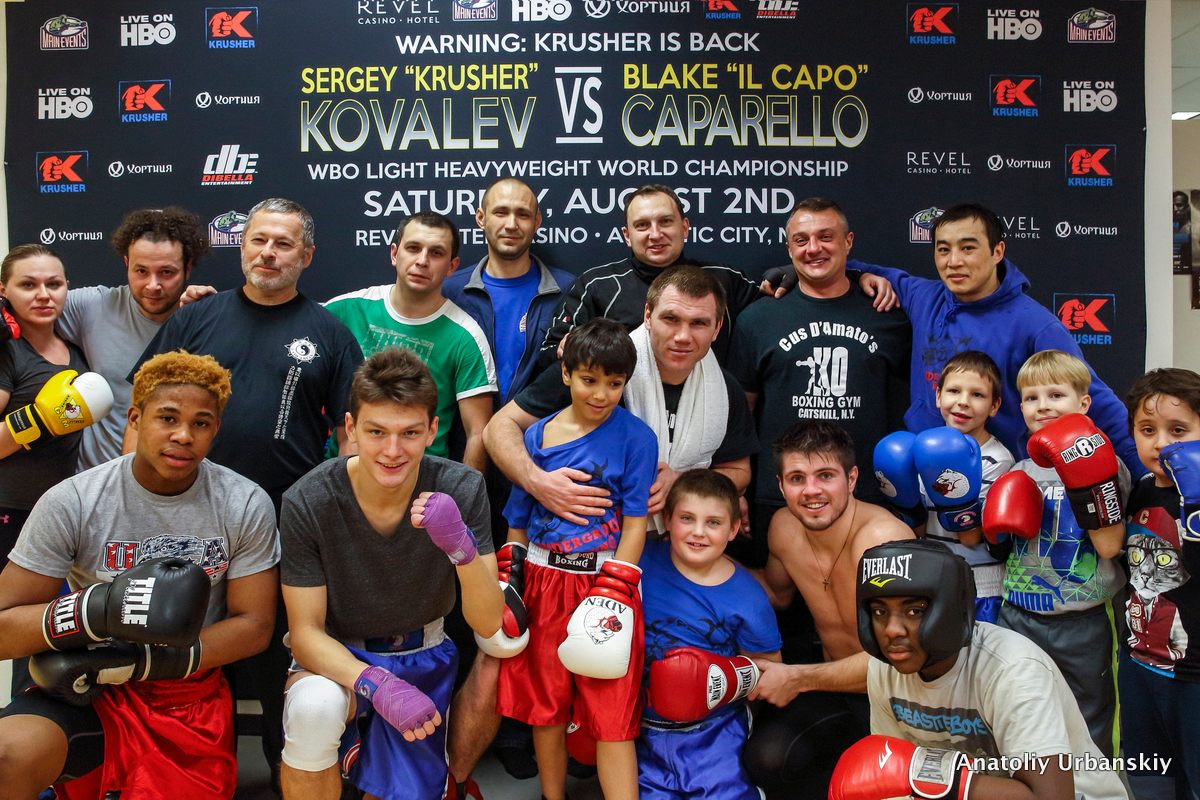
Still, the bad reputation persists. In addition to being reduced to a sport that has scant mainstream appeal, boxing’s inherent violence carries with it a stigma that middle-class America won’t likely embrace anytime soon. Irlinsky, though, scoffed at the suggestion that boxing was more dangerous than other sports. “In hockey, half of those players don’t have their teeth!” Irlinksy countered. “And don’t get me started with football…those kids have concussions by the time they are twenty. Here, the kids wear all the safety gear and everything is controlled by the trainer.”
Then she reframed the question. “What sport isn’t violent?”
If the usual American conventions seem obscured in the Underground Boxing Gym, it’s probably because the gym’s ethos is derived from more hardscrabble origins.
The neighborhood’s heritage is emblazoned on the walls of the Underground Boxing Gym, which is lined with flags that recall the 15 constituent republics of the Soviet Union. No, this isn’t a bastion of ex-Soviet tribalism (politics, much less Putin, have no place here). Nevertheless, the gym’s cultural roots and the ubiquity of Russian makes it an intuitive and accessible extension of the larger Sheepshead Bay community. “It’s like a home for many of the people who come here,” Mesishchev noted. “They feel comfortable here.”
To compare the Underground Boxing Gym solely to a kindergarten would be to overlook the gym’s broader client base, which includes two undefeated prizefighters, Golden Glove amateurs, and a mix of high school students and 9-to-5ers. The kicker? Everyone trains together. Most boxing gyms, like weight rooms, are a free agent’s paradise that operates on an open schedule, allowing the client to conduct their own workout. The reverse is true for The Underground Boxing Gym, where the neophytes learn by training alongside seasoned boxers, and where, as Mesishchev puts it, the dedicated separate themselves from the flakes. The democratic conditions are what make it possible for Artom Oryschenko, a diminutive but highly-skilled 12-year-old Ukrainian, to lead a pack of adults and tots alike through the warm ups—all under, of course, Mesishchev’s dutiful direction and workgroup philosophy that is less newfangled than you might think.
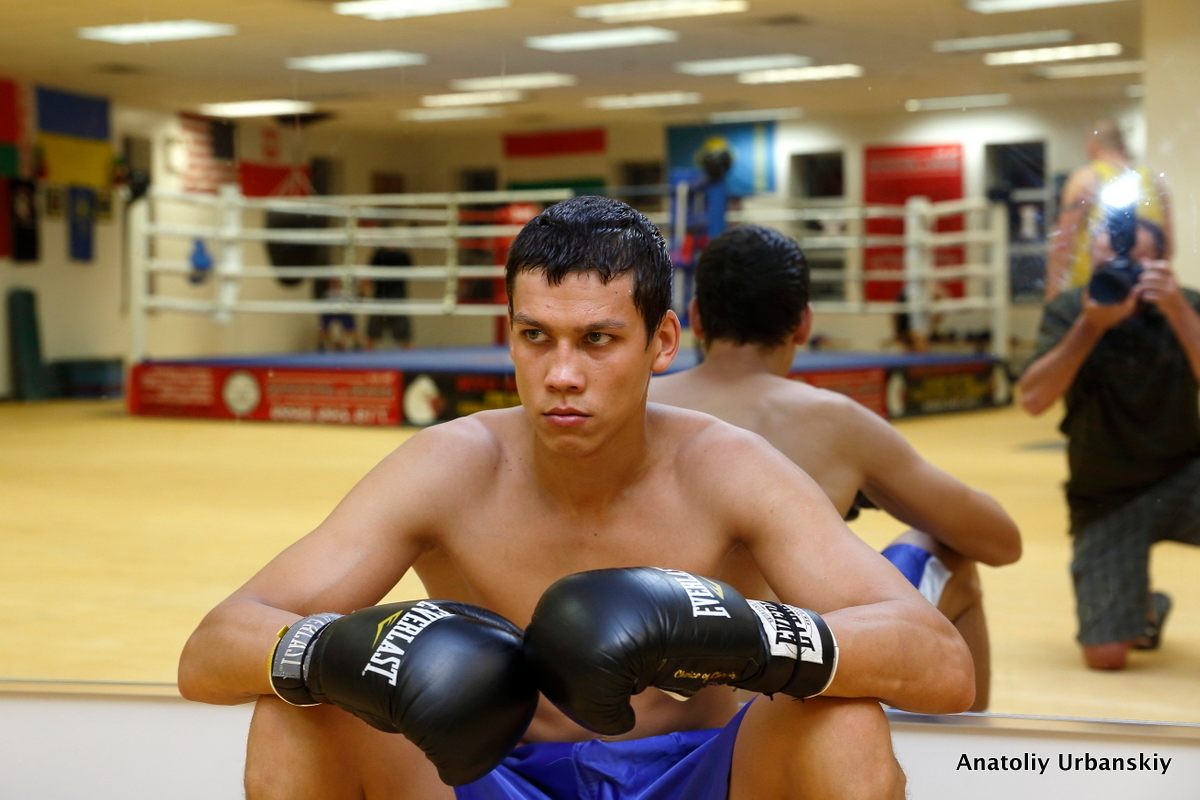
A forty-something expat from Belarus who had success in the amateur ranks on the Israeli National team before diving into coaching full time, Mesishchev is a proponent of what is colloquially referred to, in some circles, as the Soviet Style of boxing, a reference to Russia’s stellar amateur boxing program when the Iron Curtain was still up. For newcomers who are serious about amateur boxing, Mesishchev will turn them on to a grainy YouTube video of a certain Russian boxing squad undergoing various plyometric and shadowboxing drills together. “Don’t tell anyone about this,” Mesishchev cautioned, as though he were safeguarding a secret formula. More than anything else, Mesishchev maintains, the Soviet Style upholds a generous, collaborative spirit based on fine-tuning the fundamentals.
If you’re just looking to hit the heavy bag for a few rounds and twiddle around with the speed bag, the Underground Boxing Gym is probably not for you. Scarcely can you get away with throwing a flimsy jab before Mesishchev—or, say, his top professional, Constantin Bejenaru, an undefeated cruiserweight from Moldova—reprimands you. Boxing, in one of its few positive epithets, is often referred to as “Sweet Science” to describe the strategic, calculated moves a fighter makes inside the ring. It’s a sentiment that underscores the pedagogical nature of the Underground Boxing Gym.
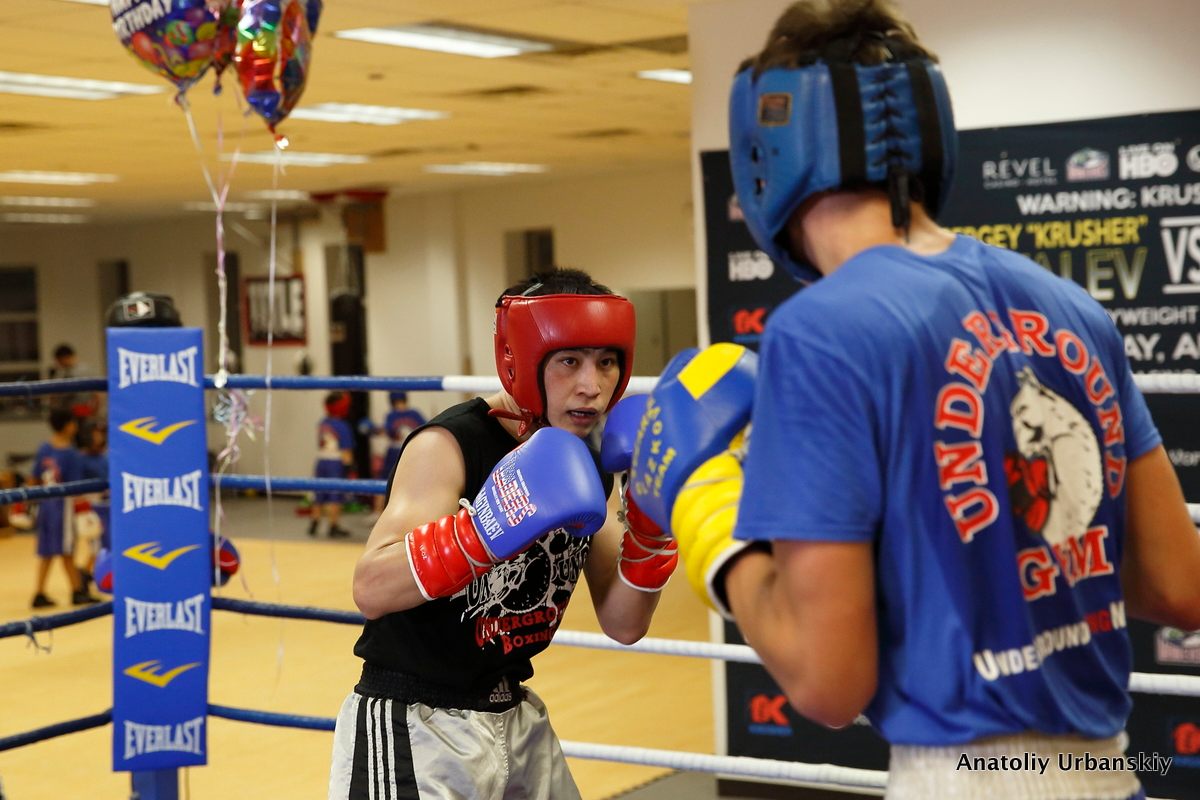
But if it sounds as though the gym peddles in anachronism, there are current developments on the professional level that legitimate Mesishchev’s ex-Soviet thinking. In recent years, boxing has seen a wave of fighters from Eastern Europe fill its ranks. Bona fide knockout artists like Gennady Golovkin (Kazakhstan) and Sergey Kovalev (Russia) have earned not only the admiration of the most dedicated fight fans but have also begun to catch the attention of the casual observer. There is also Vasyl Lomachenko (Ukraine), a two-time gold medalist and current champion in the 130-pound division, who some believe might be the most talented fighter in the world. Mesishchev is proud to be associated with this new demographic but demurred when asked if he sees this as marketing potential for his gym. “I don’t want to use their names for commercial purposes,” he said, adding that tending to his stable of fighters is more than enough.
“We’re one big family here,” Mesishchev says, as he unlaces the gloves of one his fighters. “We don’t have good guys or bad guys. Yes, some are better than others but what we are is one family.”
And like the home of any family, the Underground Boxing Gym has no lockers.
“I’ve never had anyone tell me they had their watch, keys or wallet stolen,” Mesishchev said. “This is what I mean by respect and education. Boxing is a hard, sweaty, painful, bloody job and let’s face it, not everyone is going to be a world champion. But they leave as good people.”















Follow us on Twitter to get the latest on the world's hidden wonders.
Like us on Facebook to get the latest on the world's hidden wonders.
Follow us on Twitter Like us on Facebook